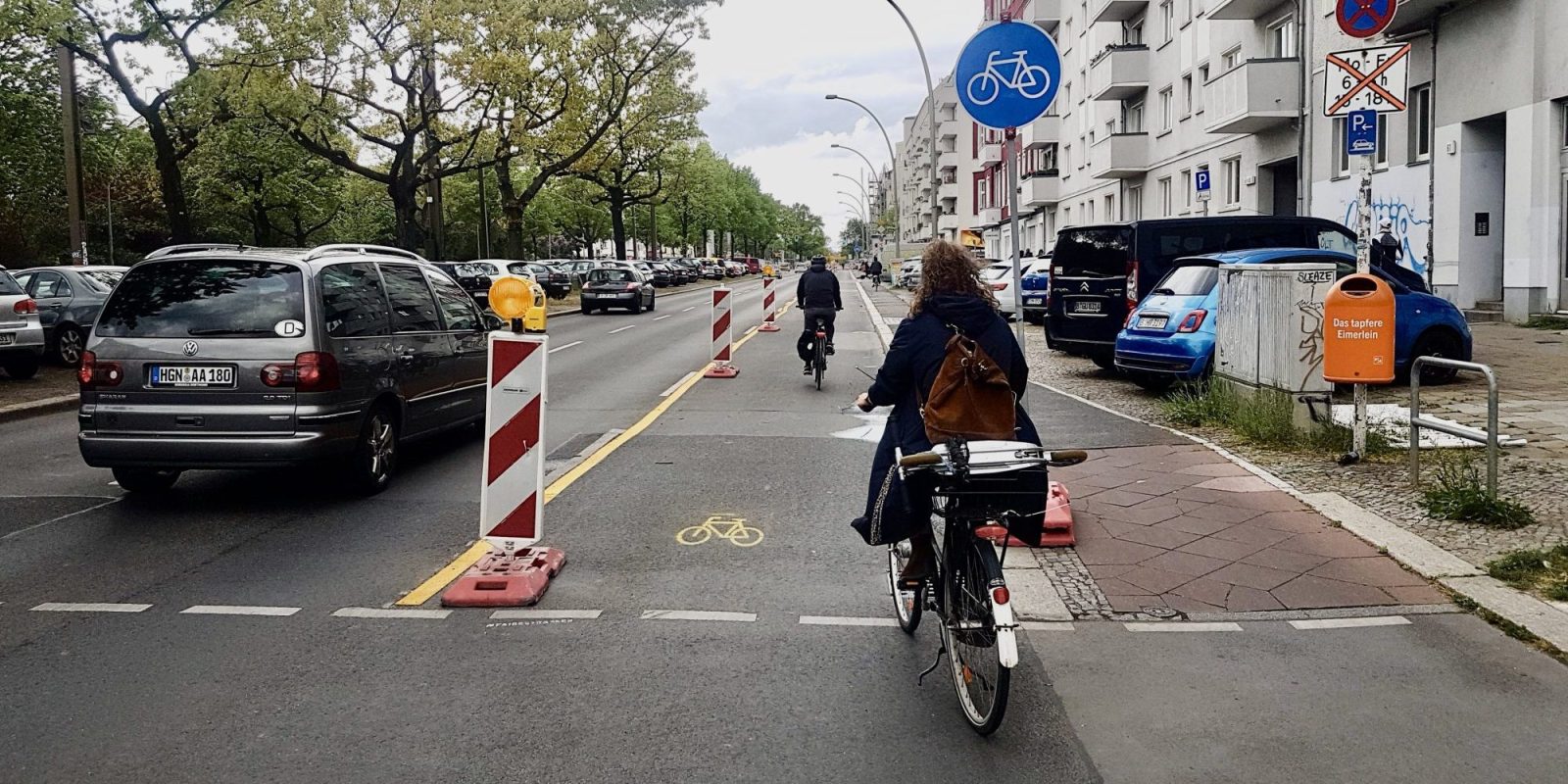
In the early part of the COVID-19 pandemic, “pop-up” bike lanes in Berlin contributed to an increase in bike traffic and a reduction in exposure to pollutants for cyclists, according to a new study.
At the start of the ongoing pandemic, many cities around Europe rushed to implement temporary bike lanes which would allow increased bike usage as the public avoided shared transport options. These temporary bike lanes were built much faster than traditional infrastructure projects, which can take years.
As a result, behavioral changes could be measured more quickly than in normal infrastructure projects. Previous studies showed that pop-up bike lanes increased cycling by 42% in cities that implemented them, even when controlling for a general increase in cycling during the pandemic.
This study primarily focused on a particular street in Berlin, Kottbusser Damm, and also measured exposure to nitrogen dioxide, one of the main contributors to smog, a majority of which is produced by fossil-fuel transportation emissions. It found a 22% decrease in NO₂ exposure along Kottbusser Damm, one of the first of these bike lanes implemented. Side streets connecting to Kottbusser Damm did not see similar reductions, showing that the bike lane itself contributed to this decrease, rather than the decrease as a result of the COVID pandemic as a whole.
Bike traffic increased by 73% on Kottbusser Damm over the course of 2020, compared to a 20-23% increase in Berlin as a whole. The highest peak of usage was in May 2020, when the lane was new, which showed a year-over-year increase of 141% from May 2019.
The swift nature of these changes (which the study authors called “tactical urbanism”) was made possible by broad agreement and cooperation between the various entities involved which were all interested in moving quickly due to COVID. It shows how a crisis can cut through red tape to make positive changes more rapidly.
The Berlin public was found to support the new bike lanes – at least, pedestrians, cyclists, and public transport users did. Car drivers, however, mostly opposed them, thinking they would increase traffic jams or decrease parking availability. (Apparently owning 90% of the width of the roads is not enough – cars must own 100% of them.) But the study results show a reduction in vehicle pollutants, suggesting that traffic jams were not increased by the presence of pop-up bike lanes.
The study suggests that temporary and experimental changes like this could help urban planners learn more about what solutions would work and how to implement those solutions more quickly – and then, if they work, to make them permanent. This is important given the rapid changes required in society to combat many current and increasing transportation-related problems, including climate change and Europe’s current energy crisis.
Electrek’s Take
This may seem like a “duh” result, but it’s still important to confirm and quantify assumptions that we have about these things so that we can find the best and fastest ways to combat climate change.
While we focus a lot on electric cars here, it is true that cars, regardless of if they are electric, are a big waste of space compared to bikes, public transport, and walking. Bicycles are the most efficient land transportation humanity has ever invented, so implementing measures to increase bicycle usage is good thing for society’s overall energy use.
Image: Wikipedia
FTC: We use income earning auto affiliate links. More.






Comments